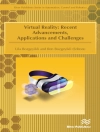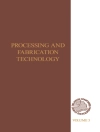- Very strong focus on key advances in understanding chicken behaviour, including sensory perception, pain and stress responses, learning and cognition as well as social behaviour
- Coverage of latest wearable, video and acoustic technologies to monitor chicken welfare
- Comprehensive coverage of welfare issues across the value chain, from hatcheries to catching, transport and slaughter
قائمة المحتويات
Part 1 Behaviour
1.Advances in understanding the genetics of poultry behaviour: Dominic Wright and Rie Henriksen, IFM Biology – Linköping University, Sweden;
2.Understanding the sensory perception of chickens: Birte L. Nielsen, INRAE, France;
3.Understanding states of suffering with implications for improved management of poultry: Ian J. H. Duncan, University of Guelph, Canada;
4.Understanding chicken learning and cognition and implications for improved management: Rafael Freire, Charles Sturt University, Australia;
5.Understanding poultry social behaviour and its impact on animal welfare: Inma Estevez, Neiker-Tecnalia Basque Institute for Agricultural Research and Development and IKERBASQUE, Basque Foundation for Science, Spain;
6.Poultry welfare monitoring: wearable technologies: Dana L. M. Campbell, CSIRO, Australia; and Marisa A. Erasmus, Purdue University, USA;
7.Poultry welfare monitoring: group-level technologies: Marian Stamp Dawkins and Elizabeth Rowe, University of Oxford, UK;
8.Improving welfare assessment indicators and protocols for poultry: Linda Keeling, Swedish University of Agricultural Sciences, Sweden;
Part 2 Welfare issues in breeding, management and housing
9.Welfare issues affecting broiler breeders: Anja Brinch Riber, Aarhus University, Denmark;
10.Opportunities to improve the welfare of young chickens: Elske N. de Haas, Utrecht University, The Netherlands;
11.Welfare issues in poultry housing and management: broilers: Ingrid C. de Jong, Wageningen Livestock Research, Wageningen University and Research, The Netherlands;
12.Welfare issues in poultry housing and management: laying hens: Victoria Sandilands, Scotland’s Rural College (SRUC), UK;
13.The role of perches in chicken welfare: Lars Schrader and Julia Malchow, Institute of Animal Welfare and Animal Husbandry – Friedrich-Loeffler-Institut, Germany;
14.Improving welfare in catching and transport of chickens: Leonie Jacobs, Virginia Tech, USA; and Frank A. M. Tuyttens, Institute for Agricultural and Fisheries Research (ILVO) and Ghent University, Belgium;
15.Improving welfare in poultry slaughter: Dorothy Mc Keegan, Institute of Biodiversity, Animal Health and Comparative Medicine, University of Glasgow, UK; and Jessica Martin, The Royal (Dick) School of Veterinary Studies and The Roslin Institute, University of Edinburgh, UK;
16.Cause and prevention of injurious pecking in chickens: Nienke van Staaveren and Alexandra Harlander, University of Guelph, Canada;
17.Bone health and associated problems in layer hens: Christina Rufener, University of California-Davis, USA; and Michael J. Toscano, University of Bern, Switzerland;
18.Poultry health monitoring and management: bone and skin health in broilers: Gina Caplen, University of Bristol, UK;
عن المؤلف
Linda Keeling is Professor of Animal Welfare at the Swedish University of Agricultural Sciences. She has a background in ethology and manages an active research group dealing with basic and applied questions related to welfare assessment, affective states in animals and effects of early experience on later behaviour. She is coordinator of the Centre of Excellence for Animal Welfare Science in Sweden and a member of the EU Platform on Animal Welfare.












